Astronomy:Zooniverse
| This astronomy needs to be updated. Please update this astronomy to reflect recent events or newly available information. (January 2024) |
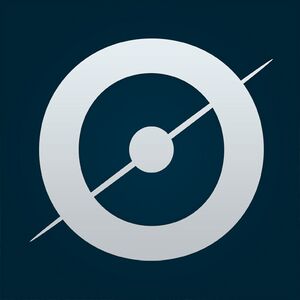 | |
Type of site | Citizen science web portal |
|---|---|
| Available in | English, German, Polish |
| Owner | Citizen Science Alliance[1] |
| Created by | Fingerprint Digital Media |
| Website | www |
| Commercial | No |
| Registration | Optional |
| Launched | 12 December 2009[2] |
| Current status | Online |
Zooniverse is a citizen science web portal owned and operated by the Citizen Science Alliance. It is home to some of the Internet's largest, most popular and most successful citizen science projects.[3] The organization grew from the original Galaxy Zoo project and now hosts dozens of projects which allow volunteers to participate in crowdsourced scientific research. It has headquarters at Oxford University and the Adler Planetarium.[4] Unlike many early internet-based citizen science projects (such as SETI@home) which used spare computer processing power to analyse data, known as volunteer computing, Zooniverse projects require the active participation of human volunteers to complete research tasks. Projects have been drawn from disciplines including astronomy, ecology, cell biology, humanities, and climate science.[5]
(As of February 2014), the Zooniverse community consisted of more than 1 million registered volunteers.[6] By March 2019, that number had reportedly risen to 1.6 million.[7] The volunteers are often collectively referred to as "Zooites".[8][9] The data collected from the various projects has led to the publication of more than 100 scientific papers.[10] A daily news website called 'The Daily Zooniverse' provides information on the different projects under the Zooniverse umbrella, and has a presence on social media.
The principal investigator (P.I.) of the project, Chris Lintott, published a book called The Crowd & the Cosmos: Adventures in the Zooniverse.[11]
Citizen Science Alliance
The Zooniverse is hosted by the Citizen Science Alliance, which is governed by a board of directors from seven institutions in the United Kingdom and the United States . The partners are the Adler Planetarium, Johns Hopkins University, University of Minnesota, National Maritime Museum, University of Nottingham, Oxford University and Vizzuality.[12]
Projects
Art projects
| Logo | Project | Type | Description | Launch
date |
|---|---|---|---|---|
| AnnoTate | Annotate | Volunteers on Zooniverse can help transcribe/annotate papers from many United Kingdom artists. This project has over 50,000 documents from the Tate Archive. | 1 Sep 2015 | |

|
Scribes of the Cairo Geniza | Classify | Volunteers classify old scripts written in Hebrew and Arabic. This helps prepare the scripts for annotation. The second phase of this project is being planned to launch in Spring 2018, which includes annotation.[13] This project was launched by University of Pennsylvania Libraries, the Princeton Geniza Project, the Library of the Jewish Theological Seminary, and the Genizah at Cambridge University Library[14] | 8 Aug 2017 |
| Criminal Characters | Transcription | Volunteers help in investigating the criminal careers and life histories of Australian offenders from the end of the convict period through to the Second World War.[15][16] | 6 May 2019 | |
| Davy Notebook Project | Transcription and Filteration | Volunteers help to transcribe the manuscript notebooks of Sir Humphry Davy – one of the most significant and famous figures in the scientific and literary culture of early nineteenth-century Britain, Europe, and America. | 11 Jul 2019 | |
| Saint George on a Bike | Transcription | Help scientists collect data for training an automatic caption generator for European visual art (paintings, prints, etc.) dating from the 12th to the 18th century | 29 Mar 2022 | |
| Poets & Lovers | Transcription | Poets & Lovers aims to transcribe the diaries and related papers of two major women poets of the fin de siècle, Katherine Harris Bradley and Edith Emma Cooper, who published as "Michael Field". Much of this material has only been accessible through archives in the United Kingdom until now. This project will make their material freely available to all readers in standards-compliant web and downloadable formats.[17] | 21 June 2022 |
Space projects
| Logo | Project | Type | Description | Launch date |
|---|---|---|---|---|

|
Galaxy Zoo | Decision tree | The fourth and latest incarnation of the Galaxy Zoo project, in which users are shown images of a galaxy and then asked a series of questions to classify its morphology. The current sample includes images of high-redshift galaxies taken by the Hubble Space Telescope and low-redshift galaxies from the Sloan Digital Sky Survey in New Mexico.[18] | 12 Jul 2007 |
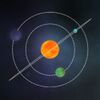
|
Planet Hunters | Annotation | Identifying extrasolar planets from the light curves of stars recorded by the Kepler space telescope.[19] | 16 Dec 2010 |
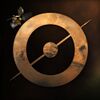
|
Planet Four | Annotation | Analyze images of the surface of Mars, taken near the Martian southern polar cap. Classifications include marking fans and blotches caused by sublimating gas and geysers underneath the carbon dioxide ice. Images come from the HiRISE camera on board the Mars Reconnaissance Orbiter.[20][21][22][23] | 8 Jan 2013 |
| Planet Four: Terrains | Filtering | Analyze images of the surface of Mars, taken by the low resolution Context camera on board the Mars Reconnaissance Orbiter, to identify future targets for the spacecraft's higher resolution HiRISE camera to investigate.[24] | 1 July 2015 | |
| Radio Meteor Zoo | Annotation | Help identify meteors in radio data detected by the Belgian Radio Meteor Stations. | 12 Aug 2016 | |
| Backyard Worlds: Planet 9 | Classifying | Help scan the realm beyond Neptune for brown dwarfs and Planet Nine. Images come from NASA's Wide-field Infrared Survey Explorer (WISE) mission.[25] | 15 Feb 2017 | |
| SuperWASP Variable Stars | Filtering | Help in identifying the most unusual variable stars by classifying light curves recorded by SuperWASP. | 5 Sep 2018 | |
| Zwicky's Quirky Transients | Filtering | Volunteers search for rare and unusual transients from data taken by the Zwicky Transient Facility. | 23 Jan 2019 | |

|
Disk Detective 2.0 | Filtering | Spot the disks around nearby stars where planets form and dwell! | 2019 |
| Radio Galaxy Zoo: LOFAR | Annotation | Volunteers help in finding supermassive black holes, starforming galaxies and active galactic nuclei from data gathered by the Low-Frequency Array (LOFAR) radio telescope. | 25 Feb 2020 | |
| AI4 Mars | Annotation | Help scientists teach mars rover how to identify martian terrain using artificial intelligence. | 23 Jun 2020 | |
| Burst From Space | Filtering | Volunteers help in finding Fast Radio Bursts from data detected by the CHIME telescope and to train machine learning software to learn to detect such bursts on their own. | 30 Oct 2020 | |
| Citizen ASAS-SN | Filtering | Classify the light curves of variable stars and help researchers find the most unusual ones. | 5 Jan 2021 | |
| Dark Energy Explorers | Filtering | Volunteers identify distant galaxies to help measure dark energy when the universe was just ~2-3 billion years old. | 23 Feb 2021 | |
| Active Asteroids | Filtering | Examine images from DECam to find comet-like tails, with the aim being to identify active asteroids.[26][27] | 31 Aug 2021 | |
| Planet Hunters NGTS | Filtering | Identify extrasolar planets by analysing light curves recorded with the Next-Generation Transit Survey. | 18 Oct 2021 | |
| SuperWASP: Black Hole Hunters | Filtering | Finding black holes by searching for symmetrical peaks in brightness of light curves of stars caused by gravitational microlensing. | 26 Oct 2021 | |
| Bursts from Space: MeerKAT | Filtering | Help in discovering and identifying compact objects, stellar flares, supernovae and their remnants, kilonovae, fast radio bursts, distant galaxies with active centres and more from data gathered by the MeerKAT telescope. | 7 Dec 2021 | |
| Solar Jet Hunter | Annotation | Study images of solar jets, small coronal mass ejections from the Sun, taken by the Solar Dynamics Observatory. | 7 December 2021 | |
| Rosetta Zoo | Annotation | Find changes on Comet 67P/Churyumov–Gerasimenko by analyzing images from the Rosetta spacecraft and to aid understanding of the history of the Solar System. | 5 May 2022 | |
| Jovian Vortex Hunter | Annotation/Filtering | Volunteers help find interesting cloud features on Jupiter.[28][29] | 20 June 2022 | |
| Cloudspotting on Mars | Annotation | Volunteers search for mesopheric clouds on Mars with data from the Mars Climate Sounder on the Mars Reconnaissance Orbiter.[30] | 28 June 2022 | |

|
Gems of the Galaxy Zoos | Filtering | Zoogems is an ongoing, gap-filler project using the Hubble Space Telescope to take images of unusual objects found by volunteers classifying data from both Galaxy Zoo (GZ) and Radio Galaxy Zoo (RGZ). | 2 February 2018 |
| Gaia Vari | Annotation/Filtering | Volunteers uncover the secrets of the Universe from the ESA Gaia mission | 13 June
2022 | |
| Gravity Spy | Annotation/Filtering | Volunteers help scientists at LIGO search for gravitational waves, the elusive ripples of spacetime. | 9 March 2016 | |
| Solar Active Region Spotter | Annotation/Filtering | Study the evolution of sunspots to discover new active regions and predict solar eruptions. | 21 March 2023 |
Nature and climate projects
| Logo | Project | Type | Description | Launch date |
|---|---|---|---|---|
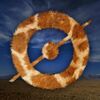
|
Snapshot Serengeti | Filtering | Classifying animals at the Serengeti National Park in Tanzania using images gathered from 225 camera traps. The purpose is to study how species are distributed across the landscape and interact with each other.[31] | 11 Dec 2012 |
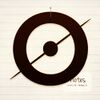
|
Notes from Nature | Transcription | 22 Apr 2013 | |
| Floating Forests | Annotation | Volunteers look at satellite images to search for large masses of giant kelp in coastal ocean environments.[32] | 8 Aug 2014 | |

|
Chicago Wildlife Watch | Annotation | Volunteers assist Lincoln Park Zoo to review millions of motion sensor images to identify and study wild animals in the urban environment.[33][34] | 11 Sep 2014 |
| Penguin Watch | Annotation | Remote camera images of areas in the Southern Ocean and Antarctic Peninsula are tagged for detections of penguins of various species. Scientists aim to measure changes in the timing of penguin breeding, nest survival rates, the rates of predation on penguin chicks, and determining where colonies overwinter at breeding sites.[35][36] | 17 Sep 2014 | |
| Chimp & See | Annotation | By identifying individual chimpanzees from videos and highlighting examples of tool use and other behaviour patterns help scientists, from the Max Planck Institute for Evolutionary Anthropology, understand chimp culture, population size and demographics in specific regions of Africa.[37] | 22 April 2015 | |
| Wildebeest Watch | Filtering | 1 July 2015 | ||
| Whales as Individuals | Annotation | Mark details on photographs of whale flukes to identify individual animals and to help computers learn to do the same.[38] | 1 July 2015 | |
| Wildcam Gorongosa | Annotation | Identify animals in trail camera photographs taken in the Gorongosa National Park in Mozambique.[39] | 1 September 2015 | |
| Fossil Finder | Annotation | Document surface images from fossil bearing landscapes in the Turkana Basin in northern Kenya to identify potential sites of fossils and stone tools for further investigation.[40] | November 2015 | |
| Snapshot Wisconsin (formerly, Wisconsin Wildlife Watch) | Annotation | Examine camera trap images from Wisconsin to identify animals and help scientists better understand trends in the distribution of wildlife populations in the state.[41] | 8 January 2016 | |
| Western Shield - Camera Watch | Annotation | Examine camera trap images from western Australia to help the Western Shield project manage the impact of feral foxes and cats on the regions' native wildlife. | 7 April 2016 | |
| Beluga Bits | Decision Tree | Examine underwater photos of wild Beluga whale and identify the age, sex, group size and look for identifying marks to recognize beluga that return to this location year after year. | 11 June 2018 | |
| PELIcams | Filtering and Annotation | Volunteers examine images from Gunnison Island located in the Great Salt Lake to learn more about the nesting behaviours, extreme weather and predators of the American white pelican.[42] | 14 September 2018 | |
| Nebraska Wildlife Watch | Filtering | Volunteers classify images of Nebraskan wildlife and help find and locate Eastern spotted skunks in Nebraska. | 24 October 2018 | |
| Cedar Creek: Eyes on the Wild | Filtering | Volunteers help in identifying the wildlife of the Cedar Creek Ecosystem Science Reserve. | 20 December 2018 | |
| Notes from Nature - WeDigFLPlants | Transcription | Volunteers help scientists to understand changes to the distribution and abundance of the flora of Florida, especially the components that are rare/endangered or introduced/invasive or of high economic value. The data gathered from this projectare also critical to curators of herbaria who manage the specimens for use in perpetuity.[43] | 9 May 2019 | |
| Notes from Nature - CalBug | Transcription | In 2010, funded by the National Science Foundation, the eight major terrestrial arthropod collections in California formed CalBug, a collaborative effort to digitize and georeference insects and spiders collected throughout California, adding hundreds of thousands of records to the In 2010, funded by the National Science Foundation, the eight major terrestrial arthropod collections in California formed CalBug, a collaborative effort to digitize and georeference insects and spiders collected throughout California, adding hundreds of thousands of records to the California Terrestrial Arthropods Database.[44] | 9 May 2019 | |
| Wildlife of Los Angeles | Filteration | Volunteers help in identifying Urban wildlife in Los Angeles in order to help city planners to make educated decisions about wildlife when planning future developments.[45] | 14 May 2019 | |
| Mapping Change | Annotation | Transcribe data from hand-written museum specimen labels to map biodiversity in the Midwestern US, to measure climate change.
This data will become part of the Minnesota Biodiversity Atlas, the permanent digital record of the Bell Museum of Natural History's collections. |
20 Sep 2020 | |
| Nest Quest Go: Swifts and Swallows | Annotation | Transcribe data from hand-written nest record cards relating to swifts and swallows into a database operated by the Cornell Lab of Ornithology | 11 Jan 2021 | |
| Nest Quest Go: Tree Swallows | Annotation | Transcribe data from hand-written nest record cards relating to tree swallows into a database operated by the Cornell Lab of Ornithology | 07 Nov 2022 | |
| Beavers from Space | Annotation | Identify beavers in satellite images of the waterways of Canada to create more resilient watersheds | 04 Apr 2023 |
Biology Projects
| Logo | Project | Type | Description | Launch date |
|---|---|---|---|---|
| Etch a Cell | Drawing | Volunteers draw around an object of interest, such as a cell membrane or mitochondria in images taken with an electron microscope at the Francis Crick Institute.[46] | 6 Apr 2017 |
Humanities projects
| Logo | Project | Type | Description | Launch date |
|---|---|---|---|---|
| Emigrant City | Transcription | Explore the history of New York City by transcribing mortgage and bond ledgers of the Emigrant Savings Bank from between 1851 and 1921, held by the New York Public Library.[47] | 1 December 2015 | |
| Measuring the ANZACs | Transcription | Transcribe documents to help create a comprehensive database of New Zealand war history, comprising the names, jobs, birthplaces and health at enlistment of Australian and New Zealand soldiers in the New Zealand Army during World War One.[48] | 14 August 2015 | |
| Beyond borders: Transcribing historical Maine land documents | Transcription | Create full-text transcriptions of manuscripts dated 1625 to 1893 from Pejepscot Proprietors, Kennebec Proprietors and Barclay collections. | Summer 2020 | |
| World Architecture Unlocked | Transcription | Transcribe one of the most comprehensive and mysterious collections of architectural photography in the world to create a digitised collection. | 27 Oct 2020 | |
| Addressing Health | Transcription | Transcribe the health histories of Victorian postal workers in order to find out how ill health affected the working lives of thousands of postal workers. | 26 Jan 2021 | |
| Voices Through Time: The Story of Care | Transcription | Transcribe the records of Coram, the UK's first children's charity, to tell the story of care from where it began. | 7 Dec 2021 |
Physics projects
| Logo | Project | Type | Description | Launch date |
|---|---|---|---|---|
| Gravity Spy | Filtering | Volunteers classify different types of noise to improve the sensitivity of gravitational-wave detectors and help scientists at the LIGO and Virgo interferometers search for gravitational waves.[49] | 12 Oct 2016 | |
| Steelpan Vibrations | Drawing | Help classify vibration patterns on the Caribbean Steelpan to learn more about how this drum works.[50] | 23 Aug 2017 | |
| New Particle Search at CERN | Annotation | Volunteers attempt to locate deflected vertices, electron, muon and photon signatures, and Higgs bosons, training machine learning algorithms on still images of collisions and particle decay in the ATLAS experiment at the Large Hadron Collider run by CERN.[51][52] | 19 October 2021 | |
| GWitchHunters | Filtering | Volunteers classify different types of noise to better understand gravitational waves detected by the Virgo interferometer and LIGO.[53] | 16 November 2021 | |
| Cosmic Muon Images | Annotation | Volunteers annotate graphs to find particle tracks as part of muon tomography experiments.[54] | 11 January 2022 |
Retired projects
| Logo | Project | Type | Description | Launch date | End date |
|---|---|---|---|---|---|

|
Solar Stormwatch | Annotation | The project uses data including video imagery from the twin STEREO spacecraft to track the formation and evolution of coronal mass ejections.[55] | 21 Dec 2009 | — |
| AnnoTate | Annotate | Volunteers on Zooniverse can help transcribe/annotate papers from many United Kingdom artists. This project has over 50,000 documents from the Tate Archive. | 1 Sep 2015 | — | |
| Galaxy Zoo Mergers | Pattern matching | Compared images of galaxies discovered by the original Galaxy Zoo to simulations to study the dynamics of interacting galaxies.[56][57][58][59] | 23 Nov 2009 | 25 Jun 2012 | |
| Galaxy Zoo Supernovae | Annotation | Used data from the Palomar Transient Factory survey to search for supernovae for quick follow-up study by telescopes around the world.[60][61][62] | 13 Aug 2009 | 3 Aug 2012 | |
| Ice Hunters | Annotation | Identified Kuiper belt objects (KBOs) for potential future targets for the New Horizons spacecraft. Also identified variable stars and asteroids. It made use of human review of subtracted images from various telescopes.[63][64] | 21 Jun 2011 | early 2012 | |

|
Old Weather Phases One & Two | Transcription | Between October 2010 and July 2012, some 16,400 volunteers transcribed the weather data from 1,090,745 pages[65] of the log books of World War 1 era Royal Navy ships. The project generated 1.6 million weather observations that will be used to improve climate modelling.[66][67] | 12 Oct 2010 | 23 Jul 2012 |
| Andromeda Project | Annotation | Used images from the Hubble Space Telescope to identify star clusters in the Andromeda Galaxy as well as background distant galaxies hidden in the star fields.[68][69] | 5 Dec 2012 | 30 Oct 2013 | |
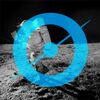
|
Moon Zoo | Annotation | High-resolution images of the Moon's surface provided by the Lunar Reconnaissance Orbiter are used by volunteers to create detailed crater counts, mapping the variation in age of lunar rocks.[70][71] | 16 Feb 2009 | Mar 2016 |
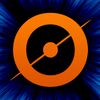
|
Space Warps | Annotation | Searched for gravitational lenses created by massive galaxies in distant space.[72][73] | 8 May 2013 | 2014 |
| Star Date: M83 | Annotation | Described the shapes and colors of star clusters in the Southern Pinwheel Galaxy (M83) using images from the Hubble Space Telescope.[74] | 13 Jan 2014 | 2014 | |
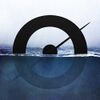
|
Whale FM | Pattern matching | Categorized the sounds made by killer whales and followed the travels of individual animals around the oceans.[75] Volunteers heard an audio clip of the whale sounds and viewed the data as a spectrogram. The project was run in conjunction with Scientific American.[76] | 29 Nov 2011 | Mar 2015 |
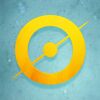
|
Seafloor Explorer | Filtering | Identified species and ground cover in images of the seafloor to create a library of seafloor habitats.[75] The images were from a robotic camera that mapped the seafloor off the coast of the northeastern United States .[77] | 13 Sep 2012 | |
| Galaxy Zoo: Bar Lengths | Annotation | Identify and measure the bars in spiral galaxies from 8,000 images taken by the Hubble Space Telescope.[78] | 1 July 2015 | — | |
| Higgs Hunters | Annotation | Uncover the building blocks of the universe. Help search for unknown exotic particles in the Large Hadron Collider data.[79] | 26 Nov 2014 | — | |

|
The Milky Way Project | Annotation | Detecting bubbles in the interstellar medium which indicate regions where the early stages of star formation are taking place. The project uses infrared images from the Spitzer Space Telescope, as well as sub-millimetre data from Herschel.[80][81] | 7 Dec 2010 | — |
| Mutual Muses | Annotate | Users can help transcribe letters between Lawrence Alloway and Sylvia Sleigh. Users transcribe one page at a time. | 1 Aug 2017 | ||

|
Parochial Archive Project in Rome | Annotate | Users can help transcribe documents from various Roman parochial sources dating back to the 16th and 17th century. Users transcribe one folio at a time. | 12 Dec 2017 | |
| Shakespeare's World | Annotate | Users help annotate and transcribe many documents from William Shakespeare's time. This project helps users and Oxford learn what life was like for Shakespeare and his comrades. | 10 Dec 2015 | - | |

|
Disk Detective | Filtering | Identify dusty debris disks in the Milky Way galaxy that indicate stars in the process of forming planetary systems. Images come from NASA's WISE telescope, as well as the DSS2 and 2MASS surveys.[82] | 30 Jan 2014 | — |

|
Old Weather | Transcription | Zooites use a special interface to digitally transcribe weather and sea ice data from the log books of United States Arctic exploration and research ships, that were at sea between 1850 and 1950.[83] The current data is the third phase of the project. | 12 Oct 2010 | — |
| Cyclone Center | Decision tree | Classifying tropical cyclones by using a modified version of the Dvorak Technique. Volunteers are shown a series of images from infrared sensors on weather satellites and asked a number of questions to identify the type and strength of the storm.[75][84] | 27 Sep 2012 | — | |
| Bat Detective | Pattern matching | Monitor the status of bat populations by classifying the sounds they make for echolocation and social purposes.[85] The data are originally recorded using ultrasonic microphones; calls are played back at a slower speed within the range of human hearing; data are also shown visually in the form of a spectrogram.[86] | 1 Oct 2012 | — | |
| Plankton Portal | Filtering | Classifying plankton from images gathered by the In Situ Ichthyoplankton Imaging System to understand how plankton types are distributed at a variety of ocean depths. The information can be used to map oceanic carbon dioxide levels, as plankton provide a valid indicator.[87][88][89] | 27 Sep 2013 | — | |
| Condor Watch | Annotation | Examine motion-capture images from Pinnacles National Park in northern California. Volunteers identify California condors and mark the distance to feeding sources such as animal carcasses.[90] | 15 Apr 2014 | — | |
| Orchid Observers | Transcription | Photograph wild orchids throughout the summer of 2015 and/or annotate images and transcribe data from the orchid collection of the Natural History Museum, London.[91] | 23 Apr 2015 | — | |
| Jungle Rhythms | Transcription | Transcribe hand-drawn observations, made between 1937 and 1958, of life cycle events for over 2,000 trees in the tropical forests of the Democratic Republic of the Congo.[92] | February 2016 | — | |
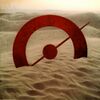
|
Ancient Lives | Transcription | Transcribing texts in Greek from the Oxyrhynchus Papyri. The papyri belong to the Egypt Exploration Society and their texts will eventually be published and numbered in Society's Greco-Roman Memoirs series.[93][94][95][96] | 26 Jul 2011 | — |
| Operation War Diary | Transcription | Transcribe British war diaries from World War I, helping historians to track troop movements, add to catalogue metadata, and delve into individual experiences of soldiers.[97][98] | 14 Jan 2014 | — | |
| Science Gossip | Annotation | Classify illustrations from the pages of early science journals and periodicals digitized by the Biodiversity Heritage Library.[99] | 2015 | — | |
| Cell Slider | Annotation | Using images from Cancer Research UK volunteers help to classify archived cancer samples.[100][101] | 24 Oct 2012 | — | |

|
Worm Watch Lab | Annotation | Watch videos of nematode worms to collect genetic data that will assist medical research.[102][103] The classifications offer data to researchers on brain and gene function.[104] The nematode species studied is Caenorhabditis elegans.[105] | 3 Jul 2013 | — |
| Asteroid Zoo | Annotation | Examine sets of time-lapsed images to search for moving objects that could be undiscovered asteroids. Data comes from the Catalina Sky Survey telescopes in Arizona. The project is run in conjunction with Planetary Resources, which is focused on developing technology for asteroid mining.[106] | 24 Jun 2014 | — | |
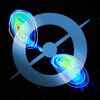
|
Radio Galaxy Zoo | Annotation | Identify radio-wavelength images of astrophysical jets in galaxies that are powered by accretion onto a black hole. The task is to correctly associate any radio components with an infrared image of the black hole's host galaxy.[107] | 17 Dec 2013 | — |

|
Sunspotter | Ranking | Examine images of sunspots and rank pairs of images according to their relative complexity. The science goal is to examine how the complexity of sunspots evolves over time and how they produce eruptions. Data for the project comes from the Michelson Doppler Instrument aboard the SOHO spacecraft.[108][109] | 27 Feb 2014 | — |
| SETILive | Annotation | SETILive was a project which attempted to use humans to identify potential signals from intelligent extraterrestrial life which may be missed by computer algorithms.[110] The data came from radio observations by the Allen Telescope Array of stars in the Kepler field of view.[111] | 29 Feb 2012 | 12 Oct 2014 | |
| Health Record Hiccups | Pattern matching | Used human pattern-spotting skills to identify sudden, unexpected changes in 7959 electronic health records for temporal data quality issues caused by "infrastructure" changes.[112][113] | 2 Sep 2020 | 23 Oct 2020 |
Project Builder
Zooniverse supports Project Builder, a tool that allows anyone to create their own project by uploading a dataset of images, video files or sound files. In Project Builder a Project Owner creates a workflow for the projects, a tutorial, a field guide and the talk forum of the Project and can add collaborators, researchers and moderators to their project. The moderators for example will have partial administrator rights in the talk, but cannot change anything concerning the workflow.[114]
Zooniverse Mobile App
Only certain kinds of projects can be enabled on Zooniverse mobile app (Android & iOS).[115][116][117][118]
See also
- Amateur exoplanet discoveries
- 9Spitch
- AWI0005x3s
- LSPM J0207+3331
- Hanny's Voorwerp
- Green Pea Galaxies
- K2-138
- PH1b
- Stargazing Live
- Tabby's Star
References
 |
- ↑ "Projects". Citizen Science Alliance. http://www.citizensciencealliance.org/projects.html.
- ↑ "The Zooniverse is Go.". 12 December 2009. http://blog.zooniverse.org/2009/12/12/the-zooniverse-is-go/.
- ↑ "New Zooniverse projects – Bat Detective and Click to Cure". European Space Education Resource Office. 30 October 2012. http://www.esero.org.uk/news/new-zooniverse-projects-bat-detective-and-click-to-cure.
- ↑ Johnson, Steve (29 January 2014). "Want to aid science? You can Zooniverse". Chicago Tribune. http://articles.chicagotribune.com/2014-01-29/entertainment/ct-zooniverse-adler-planetarium-20140129_1_citizen-scientists-citizen-science-research.
- ↑ Krevans; Fortson (4 December 2012). "Crowdsourcing ancient texts". IAS, University of Minnesota. http://ias.umn.edu/2012/12/04/crowdsourcing-ancient-texts/.
- ↑ Shannon Hall (17 February 2014). "Zooniverse Reaches One Million Volunteers". Universe Today. http://www.universetoday.com/109413/zooniverse-reaches-one-million-volunteers.
- ↑ "Combining artificial intelligence and citizen science to improve wildlife surveys" (in en-US). 22 March 2019. https://news.mongabay.com/2019/03/combining-artificial-intelligence-and-citizen-science-to-improve-wildlife-surveys/.
- ↑ Croft, Ann (16 August 2007). "Galaxy Zoo - Amateurs Analysing Galaxies". http://news.bbc.co.uk/dna/place-lancashire/plain/A25835880.
- ↑ A.K. Finkbeiner (2010). A Grand and Bold Thing: An Extraordinary New Map of the Universe Ushering in a New Era of Discovery. Free Press. ISBN 978-1416552161. https://archive.org/details/grandboldthingex0000fink.
- ↑ "Publications". Zooniverse. https://www.zooniverse.org/publications.
- ↑ Lintott, Chris (2019-10-24). The Crowd and the Cosmos: Adventures in the Zooniverse. Oxford, New York: Oxford University Press. ISBN 9780198842224. https://global.oup.com/academic/product/the-crowd-and-the-cosmos-9780198842224?cc=de&lang=en&. Retrieved 11 November 2019.
- ↑ "Citizen Science Alliance". http://www.citizensciencealliance.org/partners.html.
- ↑ Zooniverse, The (8 August 2017). "New Project – Scribes of the Cairo Geniza". https://daily.zooniverse.org/2017/08/08/new-project-scribes-of-the-cairo-geniza/.
- ↑ Research Unit ."Team that work on the". https://www.zooniverse.org/projects/judaicadh/scribes-of-the-cairo-geniza/about/team."project". 21 December 2017. https://www.zooniverse.org/users/JoseAzuajeFidalgo.
- ↑ admin. "Home page" (in en-AU). https://criminalcharacters.com/.
- ↑ "Zooniverse". https://www.zooniverse.org/projects/ajpiper/criminal-characters.
- ↑ "Research | Poets & Lovers | Zooniverse - People-powered research" (in en). https://www.zooniverse.org/projects/pmlogan/poets-and-lovers.
- ↑ "Spiral, barred, elliptical and irregular: computers automatically classify galaxy shapes". RAS. 2 June 2010. http://www.ras.org.uk/news-and-press/157-news2010/1831-spiral-barred-elliptical-and-irregular-computers-automatically-classify-galaxy-shapes.
- ↑ "NASA's Kepler Mission Announces Next Data Release to Public Archive". NASA. 12 August 2011. http://www.nasa.gov/mission_pages/kepler/news/keplerm-Q3release.html.
- ↑ "Zooniverse Archives - Citizen Science Center". http://www.citizensciencecenter.com/tag/zooniverse/.
- ↑ James Holloway (15 January 2013). "Scientists need you to analyze images of Mars". gizmag. http://www.gizmag.com/planet-four-analyze-mars/25801/.
- ↑ Peter Rothman (16 January 2013). "Explore Mars and help planetary scientists understand Martian weather". Humanity+. http://hplusmagazine.com/2013/01/16/citizen-science-explore-mars-and-help-planetary-scientists-understand-martian-weather/.
- ↑ Zooniverse, The (8 January 2013). "Planet Four and Stargazing Live". https://blog.zooniverse.org/2013/01/08/planet-four-and-stargazing-live/.
- ↑ Michael Aye (29 June 2015). "Introducing Planet Four: Terrains". Zooniverse. http://blog.planetfour.org/2015/06/29/introducing-planet-four-terrains/.
- ↑ "Zooniverse". https://www.zooniverse.org/projects/marckuchner/backyard-worlds-planet-9/about/research.
- ↑ Bennett, Kerry (2021-08-31). "Astronomer recruiting volunteers in effort to quadruple number of known active asteroids". The NAU Review. https://news.nau.edu/active-asteroids/.
- ↑ Barillas, Martin M. (2021-09-01). "Astronomers Want Volunteers to Help Spot Water-Rich 'Active' Asteroids". Zenger News. https://www.zenger.news/2021/09/01/volunteers-wanted-to-help-hunt-for-active-asteroids/.
- ↑ "Zooniverse". https://www.zooniverse.org/projects/ramanakumars/jovian-vortex-hunter.
- ↑ "Zooniverse". https://www.zooniverse.org/projects/ramanakumars/jovian-vortex-hunter/about/research.
- ↑ "Zooniverse". https://www.zooniverse.org/projects/marek-slipski/cloudspotting-on-mars/about/research.
- ↑ nels2371 (18 May 2016). "News & Events". http://www1.umn.edu/news/news-releases/2012/UR_CONTENT_423460.html.
- ↑ "Tracking Giant Kelp From Space". 31 July 2014. https://www.news.ucsb.edu/2014/014342/tracking-giant-kelp-space.
- ↑ Zooniverse, The (5 November 2014). "Urban Animals". https://daily.zooniverse.org/2014/11/05/cww-poster/.
- ↑ "Chicago Wildlife Watch Recruits Chicagoans to Help with Urban Wildlife Science Research from Home or Classroom". http://static.zooniverse.org/www.chicagowildlifewatch.org/downloads/chicago-wildlife-watch.pdf.
- ↑ "Spy on penguin families for science - University of Oxford". 17 September 2014. http://www.ox.ac.uk/news/2014-09-17-spy-penguin-families-science.
- ↑ University, Oxford. "Spy on penguin families for science". https://phys.org/news/2014-09-spy-penguin-families-science.html.
- ↑ Lisa Feldkamp (23 June 2015). "You Can Help Chimps by Watching Videos". The Nature Conservancy. http://blog.nature.org/science/2015/06/23/citizen-science-chimps-see-zooniverse-mammals-camera-traps/.
- ↑ Lisa Feldkamp (14 July 2015). "Teaching Computers to Save the Whales". The Nature Conservancy. http://blog.nature.org/science/2015/07/14/citizen-science-learning-computers-save-whales-individuals/.
- ↑ Paola Bouley (15 September 2015). "No Lion Cub Left Behind - Wildcam Gorongosa Launches". Nationalgeographic.com. http://voices.nationalgeographic.com/2015/09/12/leaving-no-lion-cub-behind-wildcam-gorongosa-launches/.
- ↑ Erin Wayman (29 November 2015). "Search for fossils from the comfort of home". Science News. https://www.sciencenews.org/article/search-fossils-comfort-home?mode=topic&context=84.
- ↑ Larry Greenmeierl (12 January 2016). "Wisconsin Wildlife Watch". Scientific American. http://www.scientificamerican.com/citizen-science/wisconsin-wildlife-watch/.
- ↑ "PELIcams >> About ------- Zooniverse". https://www.zooniverse.org/projects/jaimibutler/pelicams/about/research.
- ↑ "Zooniverse". https://www.zooniverse.org/projects/md68135/notes-from-nature-wedigflplants/about/research.
- ↑ "Zooniverse". https://www.zooniverse.org/projects/md68135/notes-from-nature-calbug/about/research.
- ↑ "Zooniverse". https://www.zooniverse.org/projects/lawildlife/wildlife-of-los-angeles/about/research.
- ↑ "Etch a Cell >> About - Zooniverse". https://www.zooniverse.org/projects/h-spiers/etch-a-cell/about/research.
- ↑ Philip Sutton (4 November 2015). "Emigrant City:Two Stories". New York Public Library. http://www.nypl.org/blog/2015/11/04/emigrant-city-two-stories.
- ↑ "Measuring the ANZACs:Crowd-sourcing research". University of Waikato. 10 August 2015. http://www.waikato.ac.nz/news-events/media/2015/measuring-the-anzacs-crowd-sourcing-a-complete-transcription-of-wwi-soldiers.
- ↑ "Zooniverse". https://www.zooniverse.org/projects/zooniverse/gravity-spy/about/research.
- ↑ "Zooniverse". https://www.zooniverse.org/projects/achmorrison/steelpan-vibrations/about/research.
- ↑ "Zooniverse". https://www.zooniverse.org/projects/reinforce/new-particle-search-at-cern/about/faq.
- ↑ "Zooniverse". https://www.zooniverse.org/projects/reinforce/new-particle-search-at-cern/about/research.
- ↑ "Zooniverse". https://www.zooniverse.org/projects/reinforce/gwitchhunters/about/research.
- ↑ "Zooniverse". https://www.zooniverse.org/projects/reinforce/cosmic-muon-images/about/research.
- ↑ "Humankind sees the Sun as never before". UKSA. 7 February 2011. http://www.bis.gov.uk/ukspaceagency/news-and-events/2011/Feb/humankind-sees-the-sun.
- ↑ Johnston, Hamish (24 November 2009). "'Galaxy Zoo Mergers' opens today". Institute of Physics. http://physicsworld.com/blog/2009/11/galaxy_zoo_mergers.html.
- ↑ "Astronomers release galactic collision game". BBC. 25 November 2009. http://news.bbc.co.uk/2/hi/science/nature/8376566.stm.
- ↑ mrniaboc (23 November 2013). "Zooniverse Birthday! – Galaxy Zoo Mergers". https://daily.zooniverse.org/2013/11/23/zooniverse-birthday-galaxy-zoo-mergers/.
- ↑ "Galaxy Zoo Mergers : How To Take Part". http://mergers.galaxyzoo.org/how_to_take_part.
- ↑ Grossman, Lisa (17 November 2010). "Help Scientists Hunt for Exploding Stars". Wired. https://www.wired.com/wiredscience/2010/11/supernova-zoo/.
- ↑ "Hunt for Supernovae With Galaxy Zoo - Universe Today". 13 August 2009. http://www.universetoday.com/37392/hunt-for-supernovae-with-galaxy-zoo/.
- ↑ chrislintott (3 August 2012). "Supernova Project Retires". https://blog.galaxyzoo.org/2012/08/03/supernova-project-retires/.
- ↑ "Citizen Scientists: Discover a New Horizons Flyby Target". NASA. 21 June 2011. http://solarsystem.nasa.gov/news/display.cfm?News_ID=37726.
- ↑ Lakdawalla, Emily (21 June 2011). "The most exciting citizen science project ever (to me, anyway)". The Planetary Society. http://planetary.org/blogs/emily-lakdawalla/2011/3073.html.
- ↑ Philip Brohan (2012). "There's a green one and a pink one and a blue one and a yellow one". Oldweather.org. http://blog.oldweather.org/2012/09/05/theres-a-green-one-and-a-pink-one-and-a-blue-one-and-a-yellow-one/.
- ↑ Philip Brohan (2012). "One million six hundred thousand new observations". Oldweather.org. http://blog.oldweather.org/2012/07/23/one-million-six-hundred-thousand-new-observations/.
- ↑ Philip (25 October 2012). "oldWeather-Arctic launch event". https://blog.oldweather.org/2012/10/25/oldweather-arctic-launch-event/.
- ↑ "Andromeda Project". http://www.andromedaproject.org/.
- ↑ Gildea, Terry (5 December 2012). "U of U Astronomers Launch The Andromeda Project". http://kuer.org/post/u-u-astronomers-launch-andromeda-project.
- ↑ Geere, Duncan (24 May 2010). "Science Crowdsourcing a map of the moon". Wired. https://www.wired.co.uk/news/archive/2010-05/24/crowdsourcing-a-map-of-the-moon.
- ↑ "NASA Invites Public to Take Virtual Walk on the Moon". NASA. 11 May 2010. http://www.nasa.gov/centers/ames/news/releases/2010/10-39AR.html.
- ↑ Alan Boyle (7 May 2013). "'Engage ! Astronomers need your assistance to detect space warps". NBC News. http://www.nbcnews.com/science/engage-astronomers-need-your-assistance-detect-space-warps-1C9834636.
- ↑ "Wanted: Citizen Scientists to Hunt 'Space Warp' Galaxies". 8 May 2013. http://www.space.com/21015-space-warp-galaxies-citizen-science.html.
- ↑ Jenner, Lynn (5 May 2015). "Hubble Views Stellar Genesis in the Southern Pinwheel". http://www.nasa.gov/content/goddard/hubble-views-stellar-genesis-in-the-southern-pinwheel/#.UtVViWRDtk4.
- ↑ Jump up to: 75.0 75.1 75.2 "Zooniverse". http://www.zooniverse.org/home.
- ↑ "Scientific American launches Citizen Science Whale-Song Project, Whale FM". http://mura.sciam.com/pressroom/pr/corporate-press-releases/2011/emscientific-americanem-launches-citizen-science-whale-song-project-whale-fm/.
- ↑ "Seafloor Explorer - Seafloor Explorer". 13 September 2012. http://blog.seafloorexplorer.org/2012/09/13/seafloor-explorer/.
- ↑ Brooke Simmons (1 July 2015). "A Galaxy Walks Into A Bar...". Zooniverse. http://blog.galaxyzoo.org/2015/07/01/a-galaxy-walks-into-a-bar/.
- ↑ "Higgs Hunters: Archive". https://www.higgshunters.org/.
- ↑ Hurt, Robert (7 December 2010). "Help Investigate Spitzer's Milky Way!". JPL. http://www.spitzer.caltech.edu/explore/blog/154-Help-Investigate-Spitzer-s-Milky-Way-.
- ↑ ttfnrob (7 December 2010). "Site Goes Live". https://blog.milkywayproject.org/2010/12/07/site-goes-live/.
- ↑ "Tagebücher der Wissenschaft » SciLogs - Wissenschaftsblogs". http://www.scilogs.com/marketing_for_scientists/launching-disk-detective-a-new-citizen-science-website/.
- ↑ Justin Gillis (2012). "Retrieving the weather of the past". New York Times. http://green.blogs.nytimes.com/2012/10/24/retrieving-the-weather-of-the-past/.
- ↑ Rennie, Jared (27 September 2012). "Welcome to Cyclone Center!". http://blog.cyclonecenter.org/2012/09/27/welcome-to-cyclone-center/.
- ↑ Mark Kinver (Environment reporter) (3 October 2012). "Website calls for people to become 'bat detectives'". BBC News. https://www.bbc.co.uk/news/science-environment-19803167.
- ↑ ProfKateJones (1 October 2012). "Welcome to Bat Detective!". http://blog.batdetective.org/2012/10/01/welcome-to-bat-detective/.
- ↑ "Plankton Portal". https://www.zooniverse.org/project/plankton_portal.
- ↑ Liat Clark. "Plankton Portal uses citizen science to measure ocean health". Wired Magazine. https://www.wired.co.uk/news/archive/2013-09/18/plankton-portal.
- ↑ "Plankton Portal uses crowd-sourcing to classify strange oceanic creatures". https://www.sciencedaily.com/releases/2013/09/130917090307.htm.
- ↑ Stephens, Tim. "'Condor Watch' enlists citizen scientists to help an endangered species". https://news.ucsc.edu/2014/04/condor-watch.html.
- ↑ "Zooniverse:Orchid Observers (UK)". Scientific American. https://lockerdome.com/6301844049758273/7630986070475284.
- ↑ Larry Greenmeierl (16 February 2016). "Zooniverse:Jungle Rhythms". Scientific American. http://www.scientificamerican.com/citizen-science/zooniverse-jungle-rhythms/.
- ↑ "Zooniverse". https://www.zooniverse.org/project/ancientlives.
- ↑ Boyle, Alan (28 July 2011). "Help scientists decipher 'lost' gospel". MSNBC. http://cosmiclog.nbcnews.com/_news/2011/07/28/7189930-help-scientists-decipher-lost-gospel.
- ↑ "Armchair archaeologists asked to decipher ancient papyri (Wired UK)". https://www.wired.co.uk/news/archive/2011-07/26/ancient-lives-project.
- ↑ James Brusuelas (2016). "Engaging Greek: Ancient Lives." In: Bodard, G & Romanello, M (eds.) Digital Classics Outside the Echo-Chamber: Teaching, Knowledge Exchange & Public Engagement, Pp. 187–204. London: Ubiquity Press. doi:10.5334/bat.k
- ↑ "WW1 soldier diaries placed online by National Archives". BBC News. 14 January 2014. https://www.bbc.co.uk/news/uk-25716569.
- ↑ "Operation War Diary: First World War Unit Diaries go online to mark centenary - First World War Centenary". http://www.1914.org/news/operation-war-diary-first-world-war-unit-diaries-go-online-to-mark-centenary/.
- ↑ "Zooniverse:Science Gossip". Scientific American. http://www.scientificamerican.com/citizen-science/zooniverse-science-gossip/.
- ↑ "Zooniverse". http://www.zooniverse.org/home.
- ↑ "Charity creates world's first citizen science project to speed up cancer research". 5 December 2013. http://www.cancerresearchuk.org/about-us/cancer-news/press-release/charity-creates-worlds-first-citizen-science-project-to-speed-up-cancer-research.
- ↑ "Zooniverse:Worm Watch Lab". Scientific American. http://www.scientificamerican.com/citizen-science/project.cfm?id=zooniverse-worm-watch-lab.
- ↑ "MRC Centenary - The Worm Watch Lab". http://www.centenary.mrc.ac.uk/events/the-wormwatch-lab/.
- ↑ Soderman. "New Citizen Science Opportunity: Worm Watch Lab". NASA. http://sservi.nasa.gov/articles/new-citizen-science-opportunity-worm-watch-lab/.
- ↑ Diep, Francie (3 July 2013). "HELP SCIENTISTS SOLVE MYSTERIES OF THE BRAIN BY WATCHING WORMS LAY EGGS". Popular Science. http://www.popsci.com/science/article/2013-07/help-scientists-watching-hermaphroditic-worms-lay-eggs.
- ↑ "Asteroid Zoo is Live! Now YOU can hunt for asteroids…". http://www.planetaryresources.com/2014/06/asteroid-zoo-live/.
- ↑ "Find black holes while you're on the bus". CSIRO. http://www.csiro.au/en/Portals/Media/Find-black-holes-while-youre-on-the-bus.aspx.
- ↑ "Press Release - Communications Office - Trinity College Dublin". https://www.tcd.ie/Communications/news/pressreleases/pressRelease.php?headerID=3567&vs_date=2014-02-27.
- ↑ "Science Week". https://www.sfi.ie/engagement/science-week/.
- ↑ Wakefield, Jane (29 February 2012). "Seti Live website to crowdsource alien life". BBC News Technology. British Broadcasting Company (Los Angeles, California). https://www.bbc.co.uk/news/technology-17199882.
- ↑ "SETILive: 2012 Update on Jill Tarter's TEDPrize wish". 1 March 2012. http://blog.ted.com/setilive-2012-update-on-jill-tarters-tedprize-wish/.
- ↑ "Zooniverse". https://www.zooniverse.org/projects/phuongquan/health-record-hiccups/.
- ↑ Quan, T Phuong; Lacey, Ben; Peto, Tim E A; Walker, A Sarah (2022-12-28). "Health record hiccups—5,526 real-world time series with change points labelled by crowdsourced visual inspection". GigaScience 12. doi:10.1093/gigascience/giad060. ISSN 2047-217X. PMID 37503960. PMC 10375518. https://doi.org/10.1093/gigascience/giad060.
- ↑ "How to create a project with our Project Builder - Zooniverse Help". https://help.zooniverse.org/getting-started/.
- ↑ Troy, Chelsea. "Zooniverse Live Coding". https://www.youtube.com/playlist?list=PLwWm3SC4yPMwBasFAfP_yC0uZHMoPcCIi.
- ↑ "Mobile App". https://www.zooniverse.org/about/mobile-app.
- ↑ "mobile" (in en). 6 November 2020. https://blog.zooniverse.org/?s=mobile.
- ↑ troy, chelsea. "Zooniverse". https://chelseatroy.com/?s=Zooniverse.

